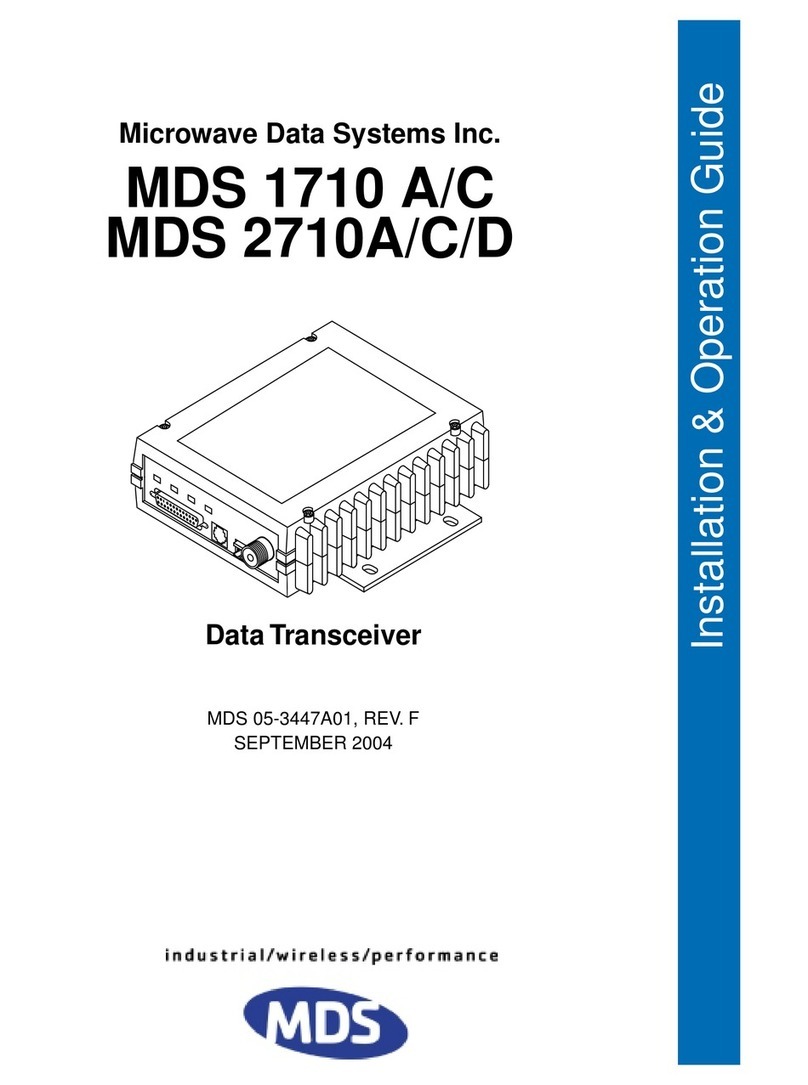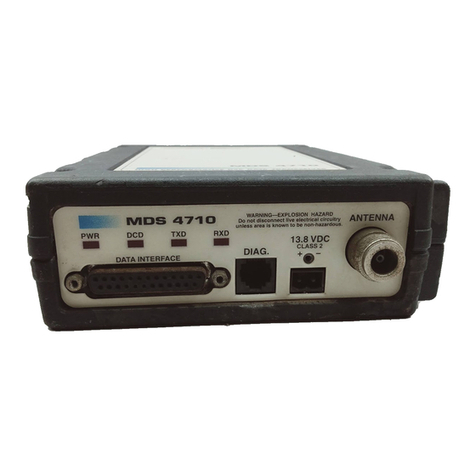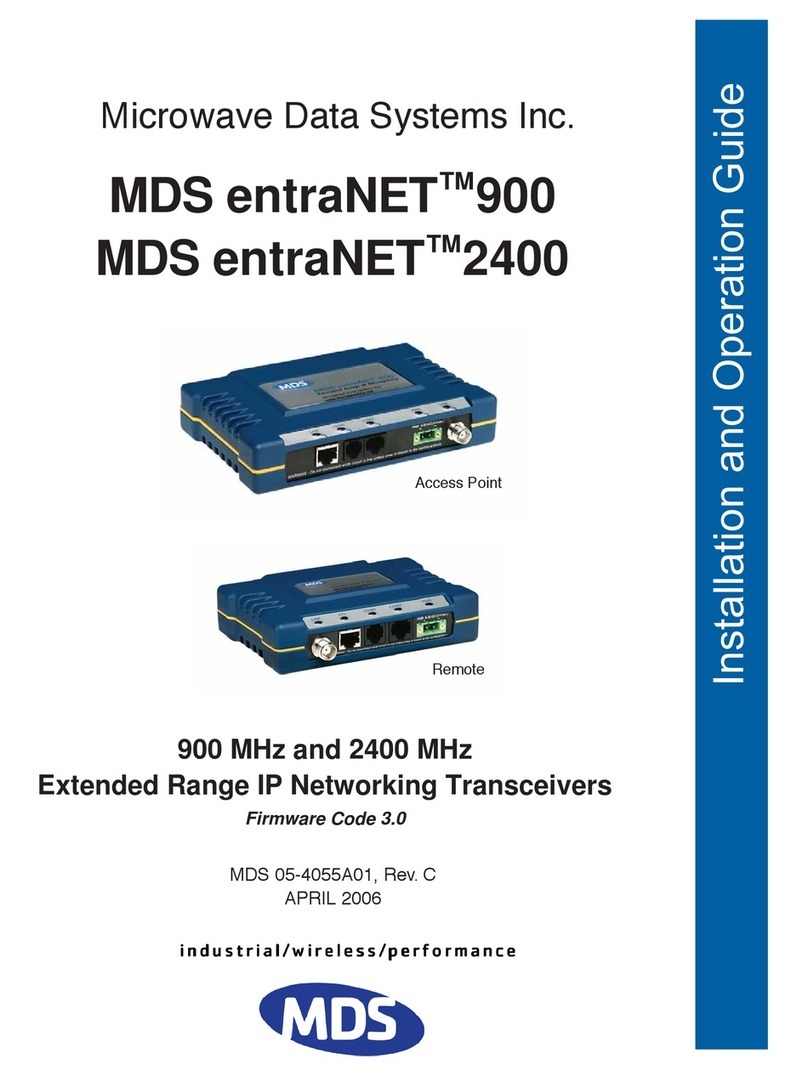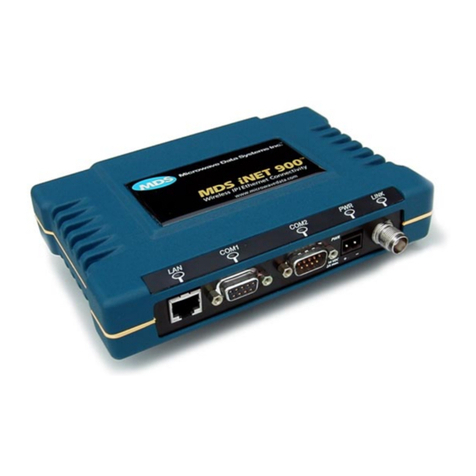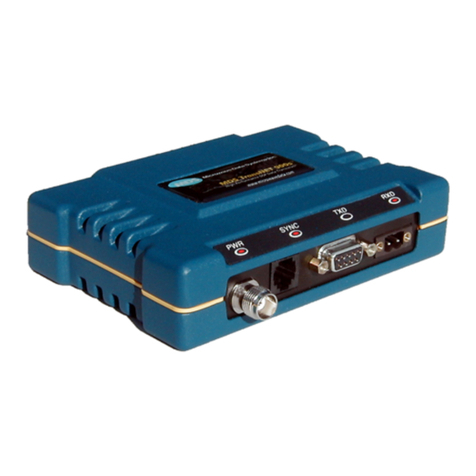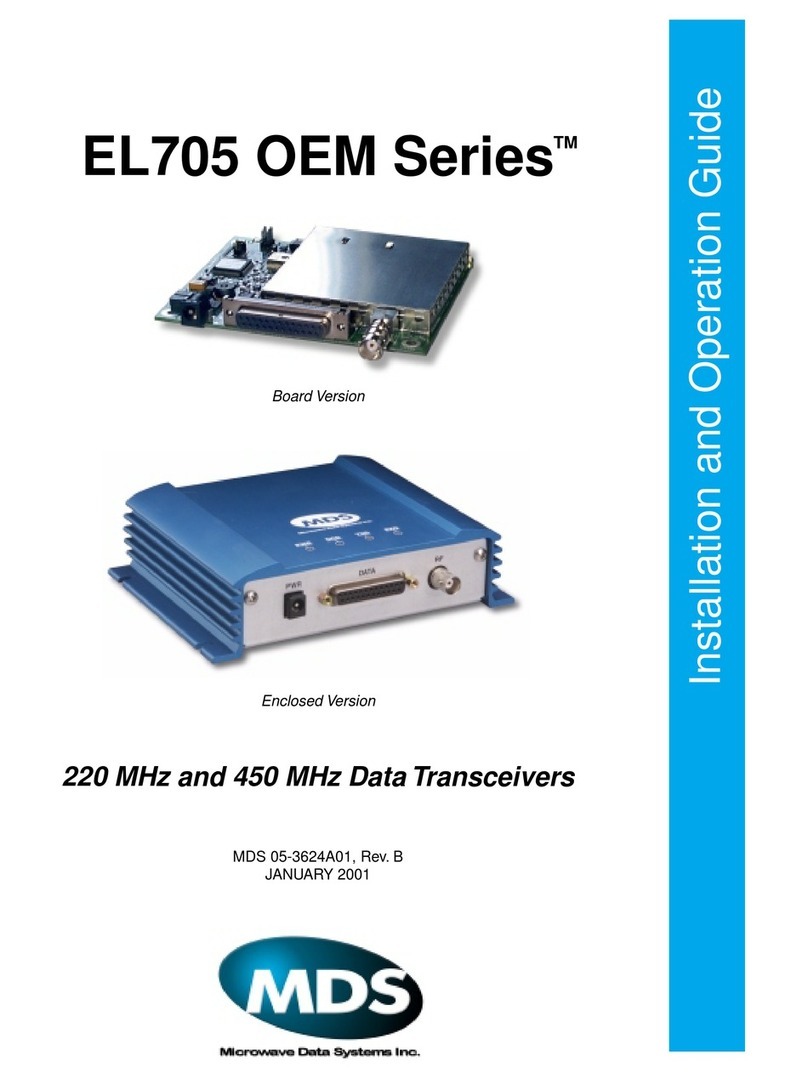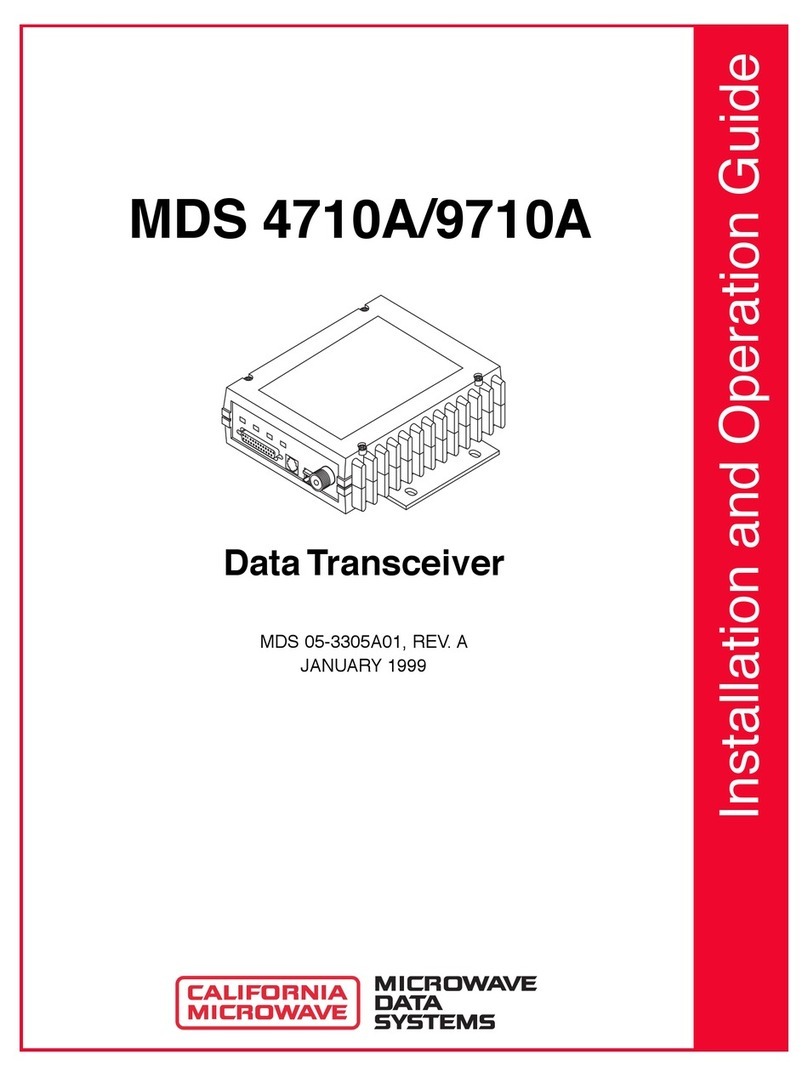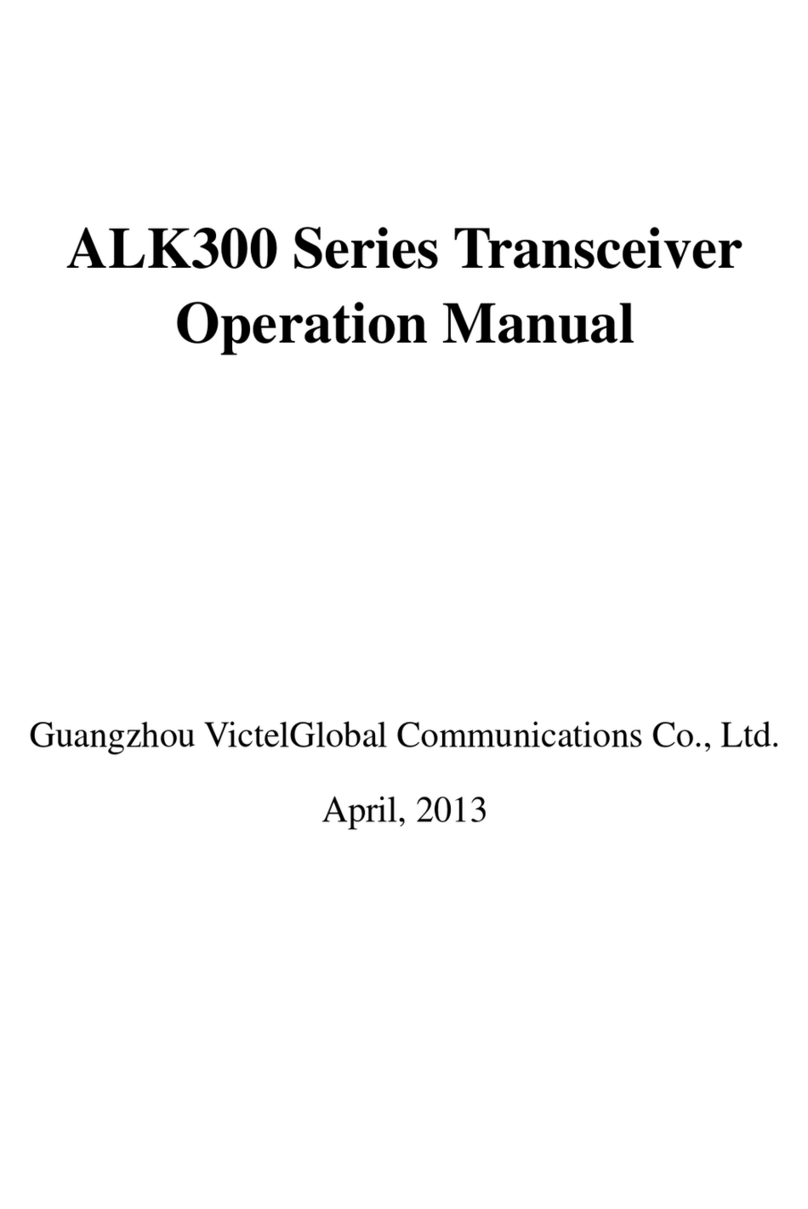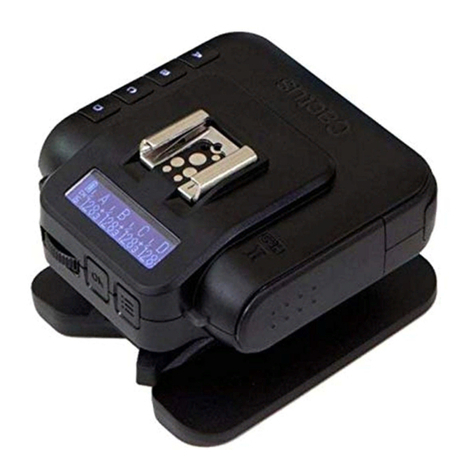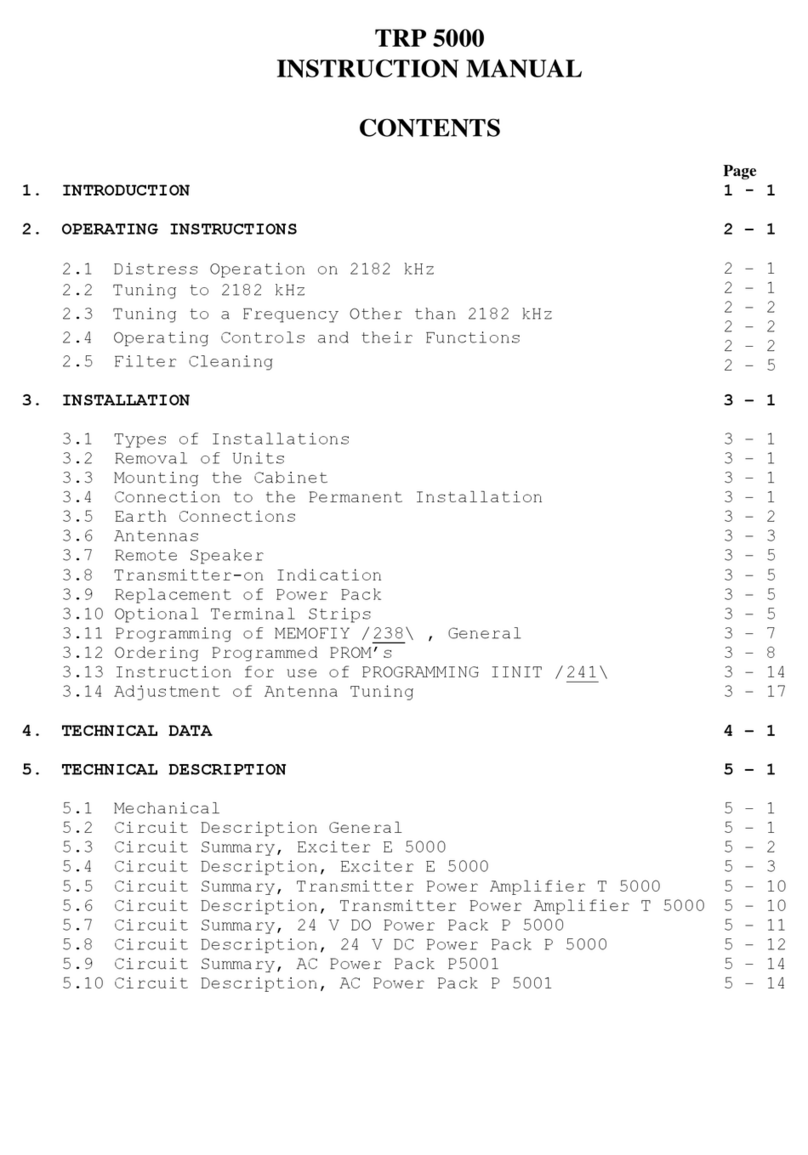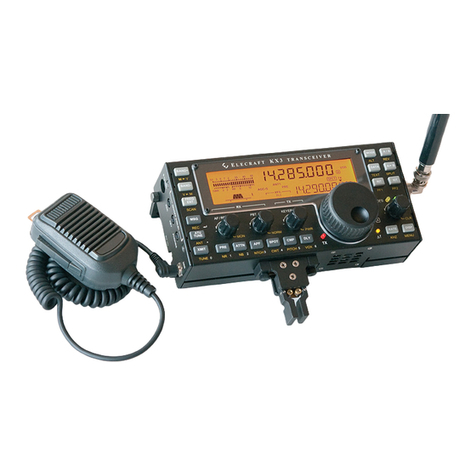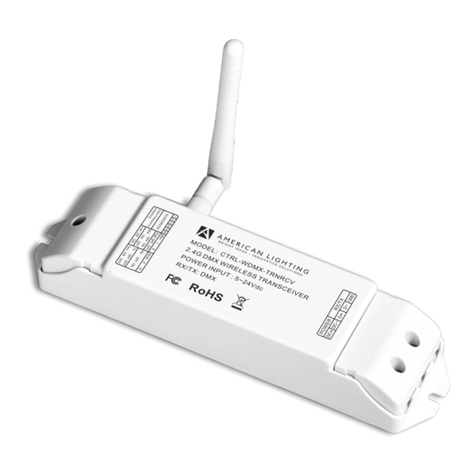
MDS 05-2806A01, Rev. F iNET Series User’s Guide v
Other MDS
i
NET 900 Series Documentation
Installation Guide
The associated MDS
i
NET 900 Series Installation Guide, P/N 05-2873A01, is
provided with the transceiver and is limited to essential information needed for installers. The
installation guide assumes some guidance to installers will be provided by the readers of this
manual. This includes such things as antenna selection, radio communication site survey tools and
techniques, and network design.
Related Materials on the Internet
Data sheets, frequently asked questions, case studies, applica-
tion notes, firmware upgrades and other updated information is available on the MDS Web site at
www.microwavedata.com.
About Microwave Data Systems Inc.
Almost two decades ago, MDS began building radios for business-critical applications. Since then,
we ve installed nearly 100,000,000 radios in over 110 countries. To succeed, we overcame impass-
able terrain, brutal operating conditions and disparate, complex network configurations. We also
became experts in wireless communication standards and system applications worldwide. The
result of our efforts is that today, thousands of utilities around the world rely on MDS-based wire-
less networks to manage their most critical assets.
The majority of MDS radios deployed since 1985 are still installed and performing within our cus-
tomers’ wireless networks. That s because we design and manufacture our products in-house,
according to ISO 9001 which allows us to control and meet stringent global quality standards.
Thanks to our durable products and comprehensive solutions, MDS is the wireless leader in indus-
trial automation including oil and gas production and transportation, water/wastewater treat-
ment, supply and transportation, electric transmission and distribution and many other utility
applications. MDS is also at the forefront of wireless communications for private and public infra-
structure and online transaction processing. Now is an exciting time for MDS and our customers
as we look forward to further demonstrating our abilities in new and emerging markets.
As your wireless needs change you can continue to expect more from MDS. We’ll always put the
performance of your network above all. Visit us at www.microwavedata.com for more informa-
tion.
OPERATIONAL & SAFETY NOTICES
UL/CSA Notice
This product is available for use in Class 1, Division 2, Groups A, B, C & D Hazardous Locations. Such locations are
defined in Article 500 of the National Fire Protection Association (NFPA) publication
NFPA 70
, otherwise known as
the National Electrical Code.
The transceiver has been recognized for use in these hazardous locations by two independent agencies Underwriters
Laboratories (UL) and the Canadian Standards Association (CSA). The UL certification for the transceiver is as a Rec-
ognized Component for use in these hazardous locations, in accordance with UL Standard 1604. The CSA Certifica-
tion is in accordance with CSA STD C22.2 No. 213-M1987.
Professional installation required. The radio equipment described in this guide emits radio
frequency energy. Although the power level is low, the concentrated energy from a direc-
tional antenna may pose a health hazard. Do not allow people to come closer than 23 cm
(9 inches) to the antenna when the transmitter is operating in indoor or outdoor environ-
ments. More information on RF exposure is on the Internet at
www.fcc.gov/oet/info/documents/bulletins
.
RF Exposure

